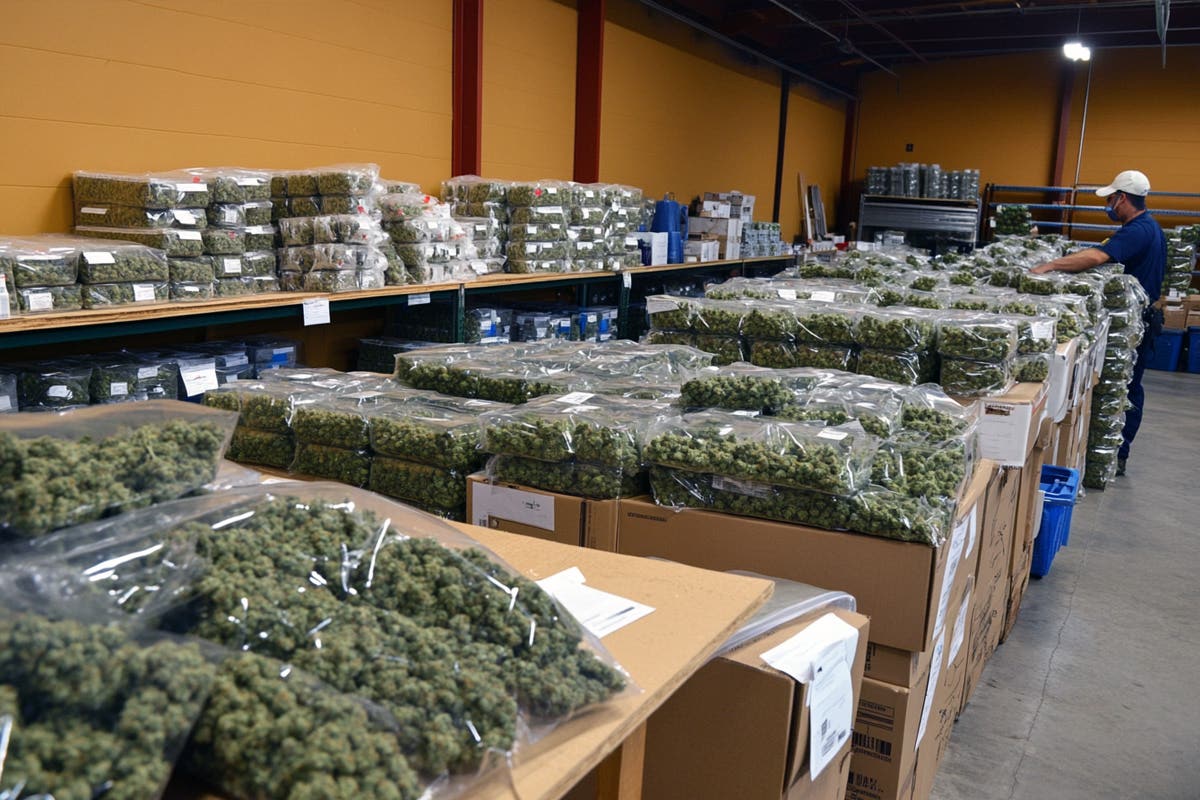Germinating cannabis seeds is the first and one of the most crucial steps in growing healthy plants. For novice growers, understanding the essential conditions and techniques for cannabis seed germination can make all the difference in achieving strong, viable seedlings. This guide covers all aspects of cannabis seed germination, from selecting seeds to creating the ideal environment, along with expert tips on common mistakes and troubleshooting. Let’s dive into the basics so you can start your grow on the right foot and see successful results.
Understanding Cannabis Seed Germination
Germination is the process of a cannabis seed sprouting into a seedling, a transition that occurs when the seed is exposed to moisture, warmth, and oxygen. This stage is pivotal because it lays the foundation for healthy cannabis growth. For beginner cannabis growers, getting the germination phase right means creating a favorable environment that encourages seeds to sprout within a few days.
To germinate cannabis seeds effectively, it’s essential to control key elements such as moisture levels, temperature, and light exposure, which we’ll break down in detail below.
Step 1: Choosing Quality Cannabis Seeds
The quality of your cannabis seeds directly affects your germination success rate and, ultimately, your plant’s health and yield. Start by selecting high-quality seeds from a reputable source to avoid issues like poor germination rates or weak seedlings. Look for seeds that are dark brown or tan with a hard shell, as these are often indicators of mature, healthy seeds.
Popular Seed Types for Germination:
- Regular Seeds: Ideal for breeding but may produce male or female plants.
- Feminized Seeds: Genetically modified to grow female plants only, making them ideal for consistent yields.
- Autoflowering Seeds: Great for beginners, as they automatically flower regardless of light cycles, often producing faster harvests.
Step 2: Selecting a Germination Medium
Cannabis seeds can germinate in various mediums, each with its own benefits. Here are a few options suited for both beginners and more experienced cultivators:
- Soil: A common choice, soil is nutrient-rich and offers a natural environment for cannabis seeds. Use light, airy soil with a balanced pH for best results.
- Peat Pellets or Plugs: Pre-moistened and easy to handle, these are beginner-friendly and maintain consistent moisture.
- Rockwool or Coco Coir: Often used in hydroponics, both mediums retain moisture well and allow for good airflow, creating a stable environment for cannabis seeds.
Step 3: Preparing the Germination Environment
Creating a stable, nurturing environment for cannabis seeds ensures a higher germination success rate. Cannabis seeds require a specific balance of moisture, temperature, and airflow to thrive.
- Moisture Levels: Begin by soaking your chosen medium in clean, pH-balanced water. Cannabis seeds should be kept moist but never overly saturated, as too much water can lead to rot.
- Temperature for Germination: Cannabis seeds typically require temperatures between 70°F and 80°F for germination. A consistent warmth will help speed up sprouting, which is why some growers use a heat mat in colder environments.
- Humidity Control: A humidity dome can create a mini-greenhouse effect, trapping moisture and warmth—perfect for maintaining the optimal environment for cannabis seeds to germinate. Aim for a humidity level between 70%-80%.
Step 4: Sowing Cannabis Seeds
Once your seeds and medium are ready, it’s time to sow the seeds. This step requires care, as proper placement encourages faster germination and minimizes stress on the seedlings.
- Placement Depth: Place seeds about ¼ inch deep in the medium. Cover them lightly to protect them from light and allow them to retain moisture.
- Spacing for Growth: Ensure that each seed has enough space to develop roots without crowding, which helps prevent competition for nutrients.
- Covering the Seeds: Gently press down on the medium to make sure the seed has good contact with moisture while still having access to oxygen.
Step 5: Setting Up Lighting for Germination
Cannabis seeds do not need light to sprout but will need it immediately once they emerge from the medium. Proper lighting is essential to avoid “stretching,” a condition where seedlings grow too tall and weak due to lack of light.
- Light Intensity: Set your lights to a low intensity initially, increasing it gradually as the seedlings grow.
- Duration: An 18- to 24-hour light cycle is ideal for young cannabis seedlings, simulating long daylight hours and encouraging sturdy growth.
- Distance from Seedlings: Position lights 8-12 inches above the seedlings to prevent stretching. Keep an eye on their height and adjust the light if you notice signs of excessive stretching.
Step 6: Monitoring Temperature and Humidity During Germination
Maintaining stable temperature and humidity levels during germination and early growth is essential. As seedlings grow, environmental control helps ensure steady, healthy development.
- Optimal Temperature Range: Keep the germination area at a steady temperature of 70°F to 80°F. Temperatures outside this range can delay germination or lead to weak seedlings.
- Adjusting Humidity Gradually: After sprouting, gradually lower the humidity from 75%-80% to around 60%-70%. This adjustment helps prepare seedlings for eventual outdoor or tent environments.
Step 7: Observing Seedling Growth and Adjusting Conditions
As cannabis seeds begin to sprout, typically within 2-7 days, monitor their progress and adjust the environment as necessary. This care will prevent issues like mold, mildew, and weak growth.
- Ventilation Control: When sprouts appear, slightly open the humidity dome vents or adjust the airflow to reduce excess moisture. This gradual introduction of airflow prevents mold buildup and helps seedlings adapt.
- Removing the Dome: When seedlings develop two or more sets of leaves, it’s time to remove the humidity dome. Full air exposure strengthens the stems, preparing the seedlings for outdoor or larger indoor spaces.
- Watering Tips: Water only as needed to keep the medium damp but not soaked. Overwatering can lead to root rot, so using a spray bottle for controlled moisture is often effective.
Step 8: Preparing Seedlings for Transplanting
As your cannabis seedlings mature, they’ll need more space to continue growing. Transplanting them to larger containers at the right time helps prevent root binding and allows them to thrive.
- Timing the Transplant: Most cannabis seedlings are ready for transplanting around 10-14 days after germination, typically when they’ve developed multiple sets of leaves.
- Pot Size for Cannabis Seedlings: Start with a small, one-gallon pot to give roots space to grow without overwhelming the seedling. This gradual increase in pot size minimizes stress on young roots.
- Transplanting Techniques: Handle seedlings gently by the base of the stem and roots, placing them at the same depth they were growing in the germination medium. This stability helps prevent transplant shock and promotes continued growth.
Common Mistakes to Avoid During Cannabis Germination
Many beginners encounter challenges during cannabis seed germination. Here are some frequent mistakes and how to avoid them:
- Overwatering: Cannabis seeds need a balanced moisture level. Too much water can lead to seed rot, so aim for a damp environment rather than soaked.
- Improper Temperature or Humidity: Cannabis seeds require a steady temperature range of 70°F-80°F and a humidity level of around 75%-80%. Extreme fluctuations in either can stress or damage the seeds.
- Using Poor Quality Seeds: Low-quality or immature seeds are less likely to germinate successfully. Choosing high-quality, mature seeds increases the chance of robust seedlings.
Essential Tips for a Higher Germination Success Rate
To maximize your cannabis germination success rate, follow these additional tips:
- Use Controlled Lighting: A Clone LED or T5 light set 8-12 inches above seedlings provides even light distribution without overstressing the plants.
- Monitor Regularly: Check temperature, humidity, and moisture daily, adjusting as needed. Small changes can have significant impacts on seedling health.
- Keep a Grow Log: Recording your conditions and techniques helps track what works best and avoid repeating any errors. This log will be helpful for future grows, as it allows you to fine-tune your methods.
By following these cannabis germination techniques, even novice growers can enjoy a successful start to their cultivation journey. Proper germination sets the stage for strong, healthy plants that will thrive in the long run, creating a rewarding experience from the very beginning. With a focus on key factors like moisture, temperature, and light, your cannabis seedlings can grow vigorously, leading to a fruitful grow.
Ready to take your first grow to the next level? Our free “How to Grow” email course is designed just for beginners like you, with simple steps and expert tips to help you succeed. Learn more





















